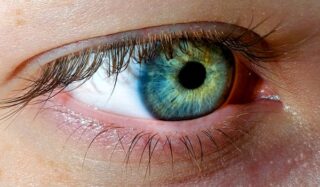
More Vision & Eye Care Articles
Recognizing Thyroid Eye Disease Symptoms for Better Eye Health

Thyroid eye disease (TED) is an autoimmune disorder that primarily affects the muscles and other tissues around the eyes. Also known as Graves’ ophthalmopathy, it is most commonly associated with an overactive thyroid gland. Recognizing thyroid eye disease symptoms is crucial for maintaining eye health and managing the condition effectively. Early detection can help minimize complications and improve quality of life.
Common Symptoms of Thyroid Eye Disease
Individuals with thyroid eye disease may experience a range of symptoms, varying from mild to severe. Recognizing these symptoms early on can lead to timely diagnosis and treatment. Some common thyroid eye disease symptoms include:
- Eyeball protrusion (proptosis), which causes the eyes to appear bulging.
- Redness and swelling around the eyes.
- Excessive tearing or discomfort in the eyes.
- Sensitivity to light and changes in vision, such as double vision or blurred vision.
- Difficulty moving the eyes or eye muscle stiffness.
Causes and Risk Factors
Thyroid eye disease is most commonly linked to hyperthyroidism, particularly Graves’ disease. However, other risk factors may contribute to the development of TED. These include smoking, genetic predisposition, and female gender, as females are more likely to develop this condition. Understanding these risk factors can aid in better management and prevention strategies.
Impact on Daily Life
Thyroid eye disease symptoms can significantly impact daily life, affecting both physical and emotional well-being. The altered appearance of the eyes, combined with difficulties in vision, can lead to social discomfort and decreased confidence. Additionally, symptoms such as dryness and irritation may require frequent eye drops or other interventions to manage effectively.
Management and Treatment Options
Managing thyroid eye disease involves a multidisciplinary approach, often incorporating the expertise of endocrinologists, ophthalmologists, and other healthcare professionals. Treatment goals are primarily focused on alleviating symptoms and preventing progression. Common management strategies include:
- Using lubricating eye drops and ointments to relieve dryness and irritation.
- Wearing sunglasses to protect eyes from light sensitivity.
- Implementing lifestyle changes, such as quitting smoking, to reduce the severity of symptoms.
- Considering medications or surgery as recommended by healthcare providers.
It’s essential to remain proactive in managing thyroid eye disease to avoid more severe complications. For more insights into managing health conditions and finding effective strategies, you can read our article on weight loss and hidden causes on our site.
Seeking Professional Guidance
Professional evaluation is critical for diagnosing and managing thyroid eye disease. An eye specialist can perform detailed examinations to assess the extent of eye involvement, while endocrinologists can provide comprehensive care for thyroid-related issues. Collaboration among healthcare providers is key to achieving the best possible outcomes.
Resources and Support
Finding support through patient advocacy groups and resources can be beneficial. These organizations offer education and community support for individuals dealing with thyroid-related conditions. Additionally, resources like Wikipedia on Thyroid Eye Disease provide comprehensive information that can be helpful for patients and their families.
Recognizing and addressing thyroid eye disease symptoms early is essential for maintaining overall eye health and well-being. Regular check-ups and consistent communication with healthcare providers are vital in managing this condition effectively.
- Thyroid eye disease primarily affects eye muscles and tissues.
- Common symptoms include eyeball protrusion and vision changes.
- Management involves eye lubricants, lifestyle changes, and medical care.
- Professional guidance and support groups are valuable resources.
- Early detection can prevent severe complications.
What is thyroid eye disease?
Thyroid eye disease (TED) is an autoimmune condition associated with thyroid dysfunction, commonly linked to Graves’ disease. It causes inflammation and damage around the eyes.
What are the main symptoms of thyroid eye disease?
The symptoms include protruding eyes, redness, swelling, excessive tearing, light sensitivity, and changes in vision like double vision or blurriness.
Are there specific risk factors for developing TED?
Yes, risk factors include smoking, genetic predisposition, hyperthyroidism, especially due to Graves’ disease, and gender, as females are more frequently affected.
How is thyroid eye disease managed?
Management focuses on symptom relief with lubricating eye drops, lifestyle modifications, protective eyewear, and medical or surgical interventions when necessary.
Can lifestyle changes help in managing symptoms?
Yes, lifestyle modifications such as smoking cessation, managing stress, and using protective eyewear can help alleviate symptoms and prevent progression.
Other Articles You May Find of Interest...
- Effective Solutions for Relieving Tired Eyes: Discover the Best Eye Drops
- Recognizing Thyroid Eye Disease Symptoms for Better Eye Health
- What Should You Look for Before Buying an Optometry or Podiatry Practice?
- Relieving Eye Pain and Headache: Effective Strategies for Relief
- What Does Pain at the Corner of the Eye Indicate?
- Natural Remedies for Red Eyes: How to Clear Them Without Eye Drops
- The Science Behind How Glasses Improve Your Vision














